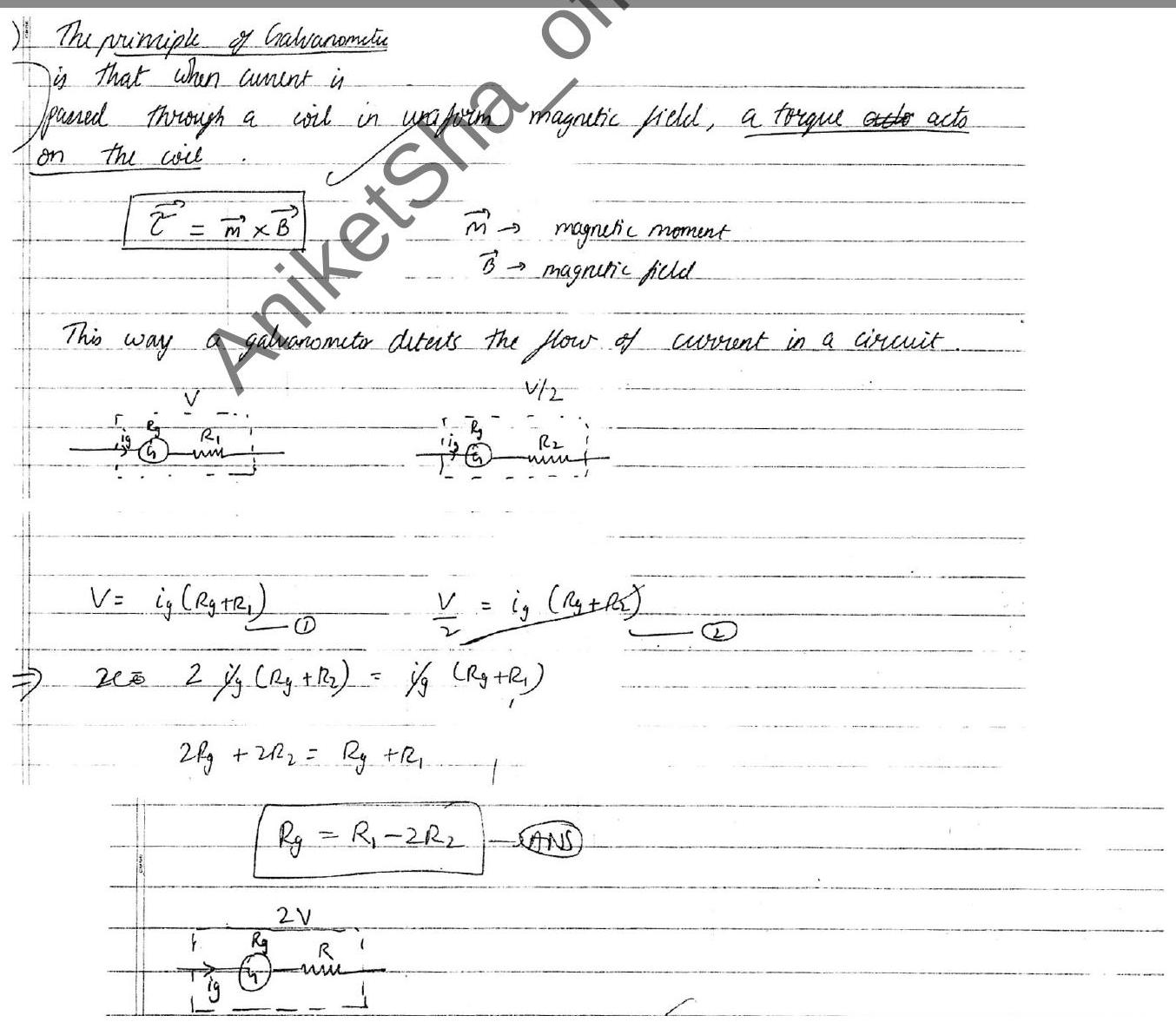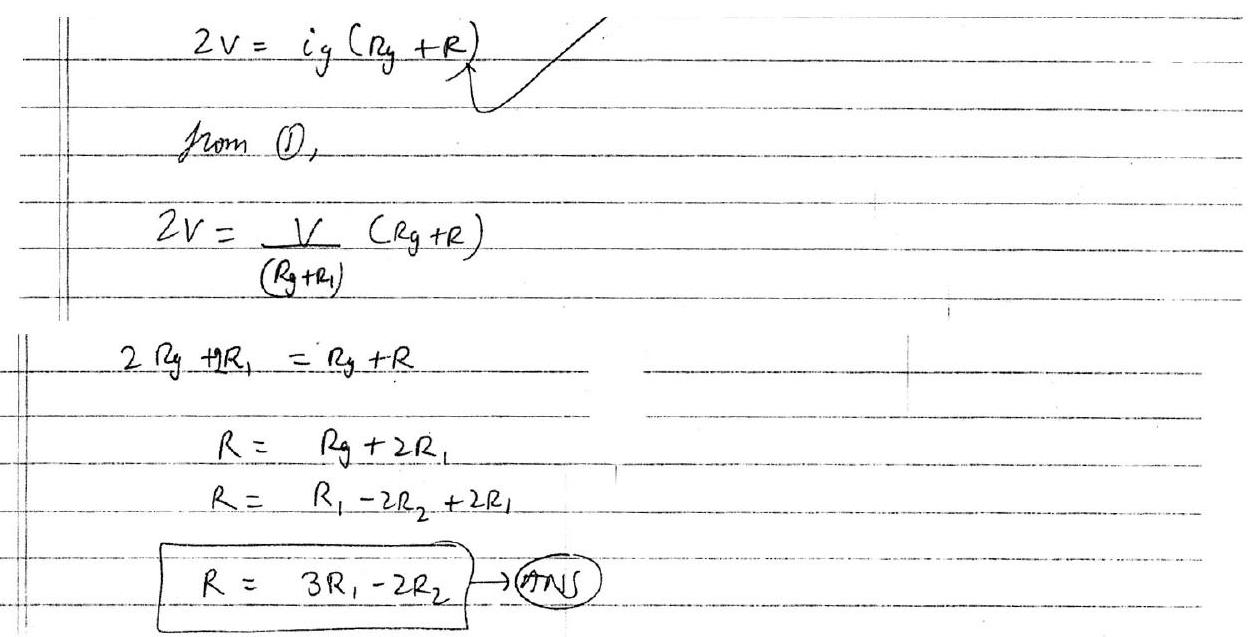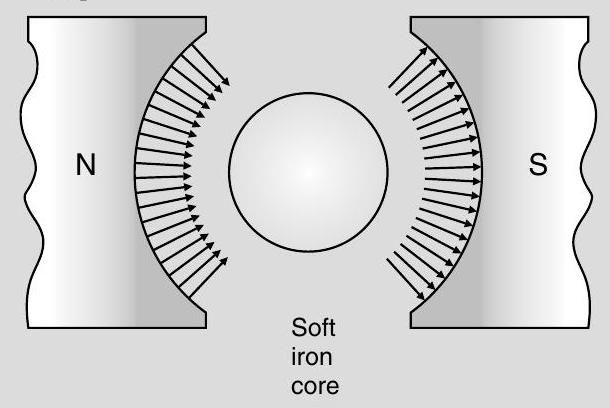moving-charges-and-magnetism Question 44
Question: Q. 4. Describe the working principle of a moving coil galvanometer. Why is it necessary to use (i) a radial magnetic field and (ii) a cylindrical soft iron core in a galvanometer?
Write the expression for current sensitivity of the galvanometer.
Can a galvanometer as such be used for measuring the current? Explain.
U [Delhi I, II, III 2017]
Show Answer
Solution:
Ans. Working Principle of moving coil galvanometer 1 Necessity of
(i) Radial magnetic field
(ii) Cylindrical soft iron core Expression for current sensitivity
When a coil, carrying current, and free to rotate about a fixed axis, is placed in a uniform magnetic field, it experiences a torque (which is balanced by a restoring torque of suspension).
(i) To have deflection proportional to current/to maximize the deflecting torque acting on the current carrying coil.
(ii) To make magnetic field radial/to increase the strength of magnetic field.
Expression for current sensitivity
where,
No,
The galvanometer, can only detect currents but cannot measure them as it is not calibrated. The galvanometer coil is likely to be damaged by currents in the
[CBSE Marking Scheme 2017]
Answering Tips
- Learn the working principle of moving coil galvanometer properly.
[A] Q. 5. State the principle of working of a galvanometer. A galvanometer of resistance
U] [Delhi I, II, III 2015]
Ans. Working principle : A current carrying coil experience torque when placed in a magnetic field which tends to rotate the coil and produces an angular deflection.
Let


[II Q. 6. (i) Why is the need for magnetic field radial in a moving coil galvanometer ? Explain how it is achieved?
(ii) A galvanometer of resistance ’
Ans. (i) Need for a radial magnetic field :
The relation between the current (i) flowing through the galvanometer coil, and the angular deflection
where,
Thus I is not directly proportional to
To get a radial magnetic field, the pole pieces of the magnet, are made concave in shape. Also a soft iron cylinder is used as the core.
[Alternatively, Accept if the candidate draws the following diagram to achieve the radial magnetic field.]

(ii) We have
We must also have
where,
[CBSE Marking Scheme 2015]






